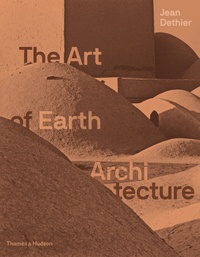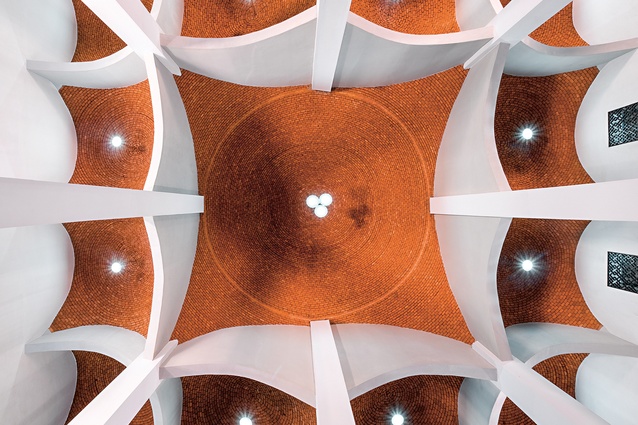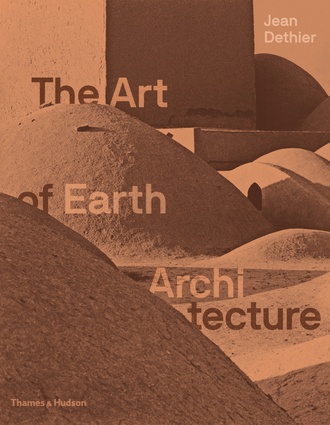Book review: The Art of Earth Architecture: Past, Present, Future
Min Hall finds this substantial and superbly illustrated book on one of the most extensively used building materials in the world an inspiration for architects looking to combat climate change.
In 1981, Belgian-born architect Jean Dethier curated the exhibition Down to Earth – Mud Architecture: An old idea, a new future at the Centre Georges Pompidou. The exhibition, and its companion text of the same name, celebrated earth architecture and enthusiastically promoted its potential in the face of an environmental crisis. Forty years on, The Art of Earth Architecture takes up these themes with renewed vigour and considerable success.
In this substantial and superbly illustrated volume, Dethier and his contributing authors seek to remedy the “collective amnesia” that has – until now – left the global history of raw-earth architecture largely unwritten, despite the increased interest in vernacular architecture since the 1960s. They seek, also, to provoke: to question why one of the most extensively used building materials in the world has been disregarded for so long, especially when architects are looking for materials to combat climate change.

The book is structured chronologically and thematically, with each chapter featuring a number of essays, together with an ‘Earth Architecture Gallery’ of buildings, landforms, artefacts and art. The first chapters introduce earth as a construction material and explore its early use. Chapter four, ‘Vernacular Heritage’, includes essays and a plethora of tantalising photographs and drawings covering not only age-old traditions but also their contemporary revival for heritage restoration projects, and for rebuilding after natural and man-made disasters.
The wider theme of modernising earth architecture is addressed directly in chapter five. This covers the period from 1789 to 1968 – an era bookended by two revolutions and two “great pioneers of modern earth architecture”: French architect François Cointeraux (1740–1830) and Egyptian architect Hassan Fathy (1900–1989). Cointeraux, seeking an economical building method that would enable the democratisation of rural society after the French Revolution, modernised the ancient technique of rammed earth by using movable wooden formwork. He founded schools of rural architecture in Paris, Lyon and Grenoble, and his texts were disseminated throughout the Western world. Fathy sought to revive the ancient vernacular tradition of building with raw-earth bricks, most famously for the village of New Gourna (1948). The chapter concludes with discussion and work from the counter-culture revolution, which emerged from the oil crisis in the 1960s.
The penultimate chapter covers the next 50 years, with essays on: the founders of CRAterre, established in France in 1979; Wang Shu and Lu Wenyu, working in China since 1997; and Francis Kéré, in Burkina Faso from 2001. The accompanying ‘Earth Architecture Gallery’ showcases inspirational work, some of which will be familiar to many but also much that is not so well known.
The final chapter looks to the future for earth: obstacles and potential, education, urban contexts and the possibilities for a circular economy, suggesting, for example, that clay and gravel carved out of the landscape to build new infrastructure are a resource, not a liability. To conclude what Dethier calls “this international panorama of earth architecture”, there is a two-page spread on a project in Niger, completed in 2018. The community hub for the village of Dandaji, designed by architects Mariam Kamara and Yasaman Esmaili, incorporates a centuries-old, raw-earth mosque repurposed as a library and a new mosque using the same material in a contemporary manner.
Dethier and the contributing authors stridently advocate the potential raw earth offers architects when they are looking for strategies to address climate change and to house a ballooning global population. The low environmental impact, democratising potential, and cultural significance of earthen materials are emphasised throughout, and the authors’ arguments are enhanced by the rich history so powerfully presented over the book’s 500 pages.
The Art of Earth Architecture’s publication coincides with the 2020 iteration of the New Zealand Earth Building Standards, and one aspect that could have been discussed in more detail is the role of building standards in promoting the use of raw earth as a viable building material. While regulations are often regarded merely as a hindrance – a perspective taken by one author in the book – specific standards for earth building can inform and enable in a positive way.
This quibble aside, The Art of Earth Architecture is an important and inspiring work, and even features one building from Aotearoa – Pompallier House in Russell –designed by Cointeraux-follower Louis Perret in 1842.











